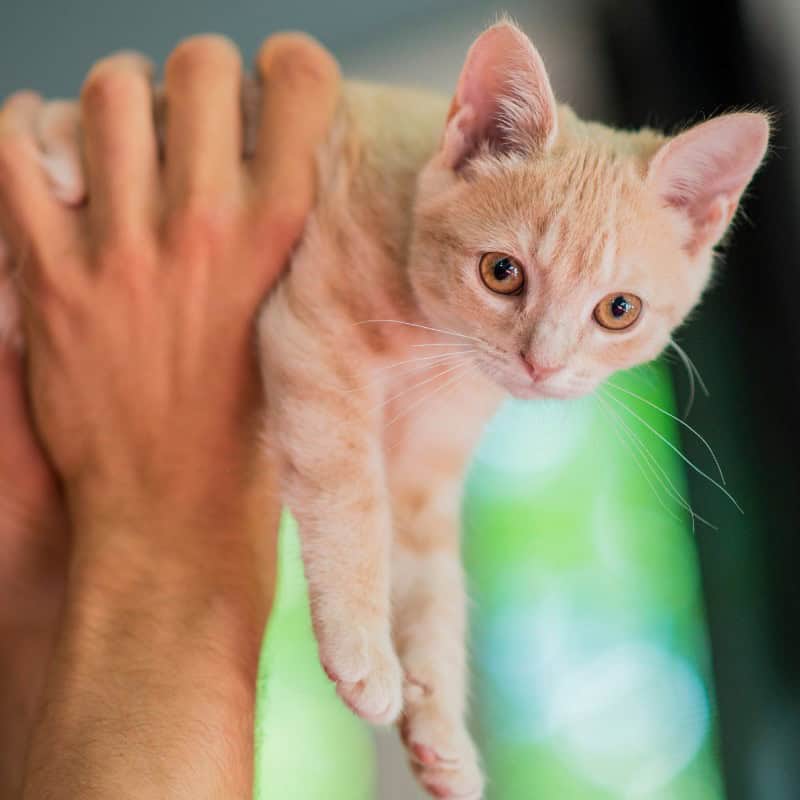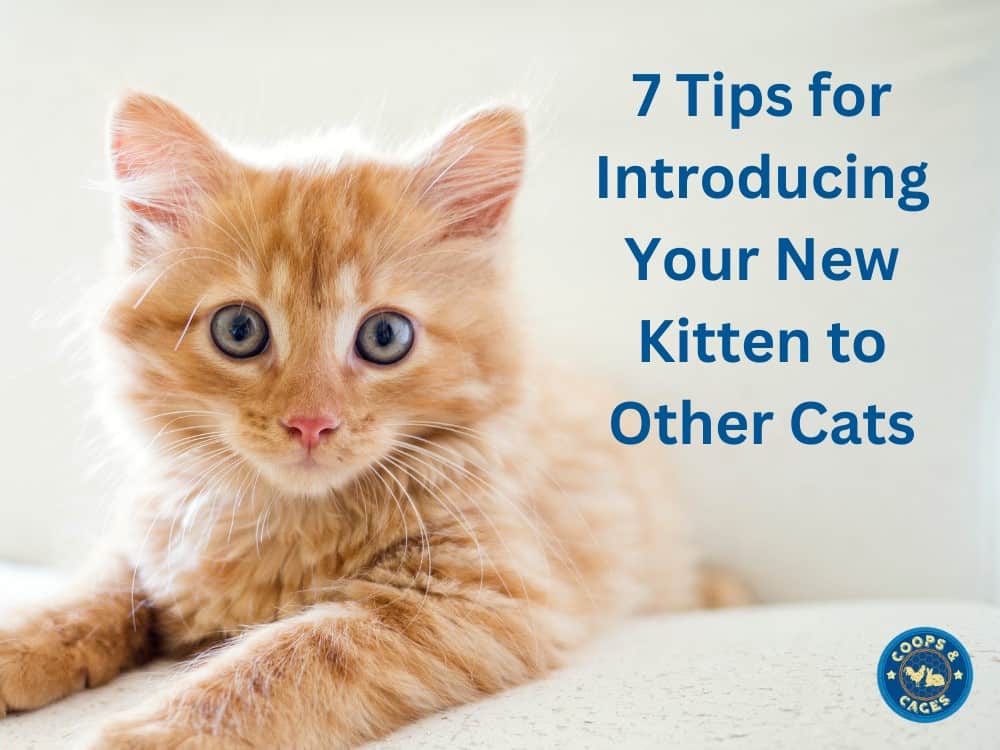Cats
7 Tips for Introducing Your New Kitten to Other Cats
Thinking of bringing home a new kitten? It is an exciting time but can be a bit concerning if you already have adult cats living at home.
As a devoted pet owner, I’m here to share with you some invaluable insights on introducing your new kitten to existing feline family members. In this blog, we’ll navigate through practical tips and proven strategies to ensure a smooth transition, fostering friendship and minimising stress for all.
Join me on this journey as we empower ourselves with the knowledge to create a purrfectly blissful multi-cat home!
1. Visit the Veterinarian
When welcoming a new kitten into your home, your first stop should always be the veterinarian. A thorough check-up ensures your furry friend is in optimal health and free from any potential illnesses or parasites that could endanger other cats in the household.
This proactive step safeguards the well-being of your existing feline. Remember, prevention is key in maintaining a safe and healthy environment for all members of your fur family.
2. Scent Introductions
Scent introductions serve as a crucial foundation for successful cat introductions.
Before allowing your new kitten and existing adult cat to meet face-to-face, start by familiarising them with each other’s scents. Swap bedding, blankets, or toys between the two cats to facilitate this process.
By mingling their scents in their respective living spaces, you’re effectively creating a sense of shared territory and familiarity without direct contact.
This gentle approach not only helps ease the transition for both cats but also minimises the likelihood of territorial conflicts when they finally come together.
3. Gradual Introductions
Gradual introductions are paramount when integrating a new kitten into a home with existing adult cats.
Begin by allowing them to become familiar with each other’s presence from a distance. Provide separate living spaces for the new kitten and adult cat initially, using physical barriers like closed doors or baby gates. This separation reduces stress and prevents potential territorial disputes.
As they acclimate to each other’s proximity, gradually increase their interaction time under close supervision. Short, supervised meetings allow them to adjust at their own pace, laying the groundwork for a harmonious relationship between your furry companions.

4. Create Safe Hiding Places
Safe hiding places are essential during the first few weeks of a new kitten and existing adult cat living together.
Provide secluded spots or cosy hideaways where both the kitten and adult cats can separately retreat to if they feel overwhelmed or need space. These hiding places serve as sanctuaries, allowing each cat to decompress and alleviate any stress during the introduction process.
A cosy cat bed tucked away in a quiet corner or a scratching post with a hideaway cave section are both great options.
5. Share the Love and Attention
Maintaining a balanced distribution of love and attention is crucial when introducing a new kitten to existing adult cats.
While it’s natural to want to give all your attention to a cute new kitten, avoid favouritism to prevent jealousy and potential conflicts among your furry companions. Allocate equal time for cuddles, play sessions and affection with both the new kitten and older cat.
By demonstrating fairness and inclusivity, you foster a sense of security and reassurance for all pets, minimising the likelihood of rivalry or territorial disputes. Remember, each cat deserves individual attention and affection to thrive within the household dynamic.
6. Keep the Litter Boxes Clean
Keeping the litter box clean is essential during the introduction process of a new kitten to a home with existing adult cats. Cats are notoriously clean animals and can become stressed or agitated if their litter box is dirty or unpleasant.
A clean litter box not only maintains a hygienic environment but also helps to reduce potential sources of tension or conflict between cats.
Additionally, having multiple litter boxes strategically placed throughout the home can alleviate competition and provide each cat with their own designated area, promoting a sense of territorial security and minimising stress during the adjustment period.

7. Desex Your Cats
Desex all existing cats as well as any new kittens to maintain a peaceful and harmonious environment.
This routine procedure not only prevents unwanted litters but also plays a crucial role in managing cat behaviour. Unaltered cats are more prone to aggression and territorial behaviours due to hormonal influences. By desexing, you mitigate these instincts, reducing the likelihood of conflicts and promoting a calmer demeanour in all cats.
However, it’s important to discuss desexing with your vet, as individual medical histories and circumstances may vary, and the procedure may not be suitable for every cat. Your vet can provide personalised guidance and recommendations based on your cat’s specific needs and health considerations.
Ian’s Wrap
Transitioning your new kitten into a home with existing adult cats requires patience, strategy, and love. From gradual introductions to providing safe hiding spaces, each step is crucial for fostering a harmonious multi-cat household.
Remember to distribute attention equally, keep litter boxes clean, and consider desexing all cats for a peaceful environment.
By implementing these tips and seeking guidance from your vet, you’re well on your way to creating a purrfectly blissful home where all your furry companions can thrive together.



